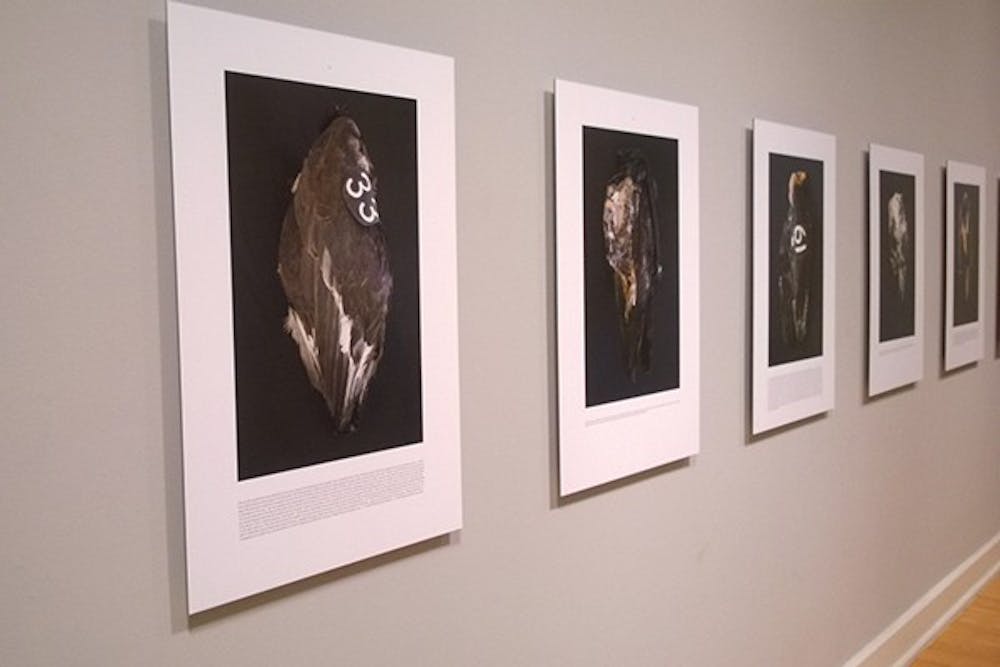"Trout Fishing in America and Other Stories" is an unusual title for a gallery, but the mission behind it is both massively important and fascinating.
Nestled in the third floor of the ASU Art Museum, the gallery is designed to explore conservation efforts and their effects in Arizona. Created by artists Bryndís Snæbjörnsdóttir of Iceland and Mark Wilson of England, the exhibition focuses on the reintroduction and preservation of two endangered species: theCalifornia Condor in the Grand Canyon and the Humpback Chub in the Colorado River.
Specifically, the exhibit targets the areas of Flagstaff, Vermillion Cliffs, Lake Powell and Phoenix, and showcases photos and videos of the conservation efforts. With these pieces, a massive wall lists the many animals in a canyon. On a far wall, 14 photos show a collection of frozen condors, who passed on through various means. The harrowing images show most of these animals died due to lead poisoning from eating animals shot by hunters.
What's saddening is reading some of the stories under the images, which appeared to be transcribed from an unedited interview. Some of the stories tell of heavy amounts of lead consumption — one condor had to be treated over a dozen times. Other tales speak of condors that have been harmed more directly by humans. More stories discuss lives lived through long travel, finding mates and those who have died due to natural causes.
On hand at the exhibit are a collection of videos explaining the efforts and the psychology behind the efforts. One such, "A Field Marshal of the Animal Revolution," features an interesting talk by co-curator and ASU English professor Ron Broglio. The talkdiscusses the human methodology behind moving and preserving the Humpback Chub, as well as the psychology of the fish. There may not be much to the visuals of the video, but Broglio's message and thought process demands at least the viewer's ear to his ideas.
Another fascinating video, "Conservation Biologist at Grand Canyon National Park," features a unnamed biologist in front of the Colorado River detailing efforts to assist the declining Humpback Chub population on account of the dam and introduction of trout.
It's a bit of a long watch at 20 minutes, but you're able to sense the importance of the work he does, including long hours and backlash from fishers who don't understand why there's a re-introduction. It meshes well as the biological side to Broglio's philosophical talk.
While Broglio presented a deep look into the altered thought process of the Chub after changes to the habitat, the biologist in turn seeks ways to repair their process through various means, which includes removal of the threatening trout.
The exhibition seeks to make us, as humans, understand our role alongside these, and other animals. We're "cohabitants," as the pamphlet states, and a single trek through the gallery makes that point very clear.
"Trout Fishing in America and Other Stories" runs from Oct. 4 to Jan. 17. Admission to the ASU Art Museum is free.
Reach the reporter at Damion.Julien-Rohman@asu.edu or follow him on Twitter @legendpenguin
Like The State Press on Facebook and follow @statepress on Twitter.





